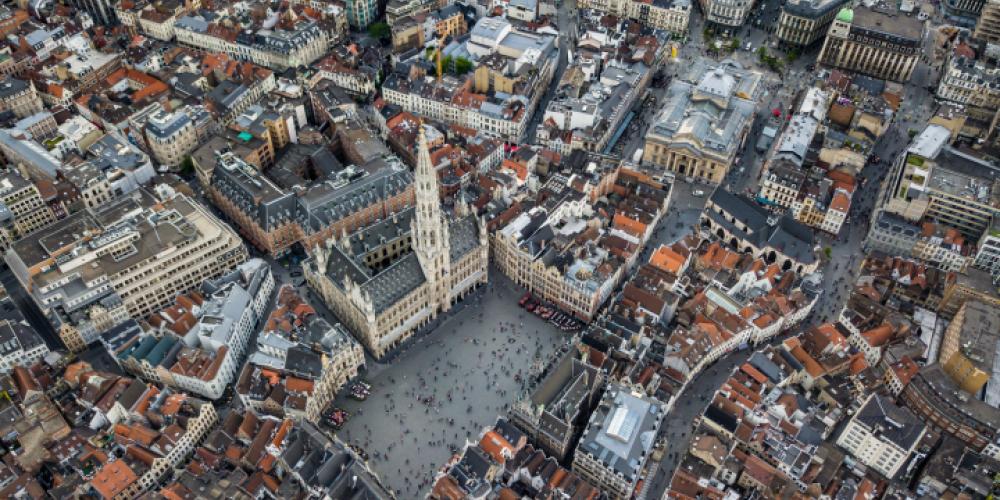
Devos: “The dark layers are an exceptional source for understanding the pre-urban phase and the extent of agricultural activity within the perimeter of the first city wall. For later phases, too, this method allows us to document activities such as waste management and gardening. This will enable us to map the evolution of the spatial organisation of activities in medieval Brussels.”
For his research, Devos applied various methods of analysis, such as observations at the various archaeological sites in the city, chemical analyses and microscopy. One of the most important techniques is micromorphological research: examining thin sheets of soil and sediment under a microscope. All components are studied in their original position, making it possible to trace the genesis of each layer and the human activities responsible for their formation. This allows researchers to study the formation of the Grand-Place, a garden, a field of wheat or a meadow, and to identify the successive activities that have happened at a certain place in a certain period of time.
Devos: “In the absence of reliable written sources, historians have been debating the rise and early development of Brussels for more than a century. Today, the study of urban soil allows us for the first time to give a picture of the spatial organisation of Brussels in the 10th to 13th centuries and to demonstrate how it developed in the 14th and 15th centuries. The synthesis of the study of the dark layers shows that Brussels still had a very rural character until at least the 12th century, with fields and meadows dominating the landscape. This changed in the 14th and 15th centuries, when we can see the rise of gardens, artisanal activities and markets, with an intensification of building activities.” Further study should make it possible to further refine the results, because every new dark layer that is cut in the construction work is a new piece of the puzzle to reconstruct the history of the city.